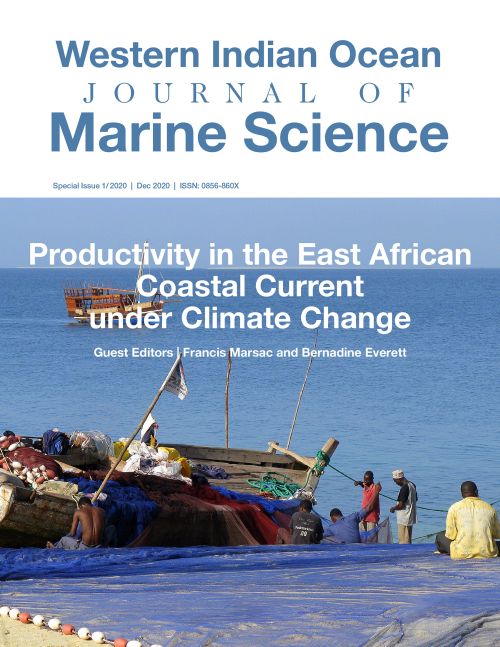Main Article Content
Employing multivariate analysis to determine the drivers of productivity on the North Kenya Bank and in Kenyan territorial waters
Abstract
A complex mix of natural processes exist in nearshore and offshore waters which influence coastal and marine ecosystem productivity. An understanding of the biogeochemical processes involved is a key element in interdisciplinary studies of primary production, oceanic flux and storage of carbon dioxide. Water circulation in the East African region is influenced by coastal currents driven by monsoon winds. There are four oceanic currents influencing Kenya’s coastal waters; namely the East African Coastal Current, the Somali Current, the Southern Equatorial Current and the Equatorial Counter Current. The Kenyan fishing industry is slowly embracing offshore fishing grounds, and the North Kenya Bank is emerging as the next fishery frontier. This study aims to provide insight on the processes driving the productivity of Kenya’s territorial waters. The variable Si* (the difference between available silicate [Si(OH)4] and nitrate [NO3-]) was employed as a proxy of upwelling. It was highly positively correlated to chlorophyll-a, indicating that upwelling is a major phenomenon driving productivity in Kenyan territorial waters. Particulate Organic Carbon (POC) and Dissolved Oxygen (DO) exhibited a lesser positive correlation with chlorophyll-a, implying that remineralization also has some influence in the productivity of the area.




